Recent Progress on Semiconductor-Interface Facing Clinical Biosensing
Abstract
1. Introduction
2. Current Progress Semiconductor Interfaced-Based Field-Effect Transistor (FET) Biosensors
2.1. Inorganic Semiconductor/Aqueous Interface
2.1.1. Nanofabrication-Affiliated FET
Nanostructured Arrays and Hierarchical Structure
Graphene Engineered Field-Effect Biosensors
MoS2 Nano-Interface
2.1.2. Membraneless Field-Effect Transistor (FET) Biosensors
2.2. Photoelectrochemical Biosensors
- The sign is perused utilizing economical and simple to-utilize instrumentation.
- Multiplexed location is accomplished utilizing multielectrode microchips.
- Due to optical excitation, PEC estimations are performed at lower inclination possibilities contrasted with their electrochemical partners.
- This brings down the deliberate electrochemical foundation flows and builds the sign-to-foundation proportion. PEC readout has been utilized to identify biomolecules, for example, DNA, RNA, and proteins. In any case, when utilizing these creation techniques, the compromise must be made between the level of auxiliary tunability, throughput, and cost.
2.3. Nano Optical Biosensor
2.4. Metal-Assisted Interface
3. Perspectives and Future Direction
3.1. Organic Semiconductor Interface for Biosensor
3.2. Integrated Biosensor with Complementary Metal-Oxide-Semiconductor (CMOS) Compatible
3.3. Metal-Organic Frameworks as Biosensors for Luminescence-Based Detection and Imaging
4. Conclusions and Perspectives
Author Contributions
Funding
Institutional Review Board Statement
Informed Consent Statement
Data Availability Statement
Conflicts of Interest
References
- Göpel, W.; Heiduschka, P. Interface analysis in biosensor design. Biosens. Bioelectron. 1995, 10, 853–883. [Google Scholar] [CrossRef]
- Sarkar, D. Chapter 9—2D materials for field-effect transistor–based biosensors. In Fundamentals and Sensing Applications of 2D Materials; Hywel, M., Rout, C.S., Late, D.J., Eds.; Woodhead Publishing: Cambridge, UK, 2019; pp. 329–377. [Google Scholar]
- Chi, E.H. Introducing wearable force sensors in martial arts. IEEE Pervasive Comput. 2005, 4, 47–53. [Google Scholar] [CrossRef]
- Akyildiz, I.F.; Weilian, S.; Sankarasubramaniam, Y.; Cayirci, E. A survey on sensor networks. IComM 2002, 40, 102–114. [Google Scholar] [CrossRef]
- Yick, J.; Mukherjee, B.; Ghosal, D. Wireless sensor network survey. Comput. Netw. 2008, 52, 2292–2330. [Google Scholar] [CrossRef]
- Martinez, K.; Hart, J.K.; Ong, R. Environmental sensor networks. Computer 2004, 37, 50–56. [Google Scholar] [CrossRef]
- Wilson, J.S. Sensor Technology Handbook; Elsevier: Burlington, MA, USA, 2004. [Google Scholar]
- Vadgama, P.M.; Higson, S.P. Sensor Devices. U.S. Pantent 5531878A, 2 July 1996. [Google Scholar]
- Ahl, T.; Byrnard, A.M. Enzyme Sensor. U.S. Pantent 6051389A, 18 April 2000. [Google Scholar]
- McIvor, K.C.; Cabernoch, J.L.; Branch, K.D.; Van Antwerp, N.M.; Halili, E.C.; Mastrototaro, J.J. Glucose sensor package system. US6892085B2, 10 May 2005. [Google Scholar]
- Chee-Yee, C.; Kumar, S.P. Sensor networks: Evolution, opportunities, and challenges. Proc. IEEE 2003, 91, 1247–1256. [Google Scholar] [CrossRef]
- Wang, G.; Cao, G.; Porta, T.F.L. Movement-assisted sensor deployment. IEEE Trans. Mob. Comput. 2006, 5, 640–652. [Google Scholar] [CrossRef]
- Hu, L.; Evans, D. Localization for mobile sensor networks. In Proceedings of the 10th Annual International Conference on Mobile Computing and Networking, Philadelphia, PA, USA, 26 Septembre–1 October 2004; pp. 45–57. [Google Scholar]
- Shostak, O.T.; Kolomeyko, A.V.; Breed, D.S.; Duvall, W.E.; Johnson, W.C. Sensor Assemblies. U.S. Patent 7089099B2, 8 August 2006. [Google Scholar]
- Madou, M.J.; Otagawa, T. Microelectrochemical sensor and sensor array. U.S. Patent 4874500A, 17 October 1989. [Google Scholar]
- Feng, Z.; Jaewon, S.; Reich, J. Information-driven dynamic sensor collaboration. ISPM 2002, 19, 61–72. [Google Scholar] [CrossRef]
- Liu, K.; Sun, Y.; Chen, L.; Feng, C.; Feng, X.; Jiang, K.; Zhao, Y.; Fan, S. Controlled growth of super-aligned carbon nanotube arrays for spinning continuous unidirectional sheets with tunable physical properties. Nano Lett. 2008, 8, 700–705. [Google Scholar] [CrossRef] [PubMed]
- Su, Y.; Li, G.; Xue, Y.; Li, L. Tunable physical properties of CaWO4 nanocrystals via particle size control. J. Phys. Chem. C 2007, 111, 6684–6689. [Google Scholar] [CrossRef]
- Lee, H.W.; Kang, D.-H.; Cho, J.H.; Lee, S.; Jun, D.-H.; Park, J.-H. Highly sensitive and reusable membraneless field-effect transistor (FET)-type tungsten diselenide (WSe2) biosensors. ACS Appl. Mater. Interfaces. 2018, 10, 17639–17645. [Google Scholar] [CrossRef]
- Saha, S.; Chan, Y.; Soleymani, L. Enhancing the Photoelectrochemical Response of DNA Biosensors Using Wrinkled Interfaces. ACS Appl. Mater. Interfaces 2018, 10, 31178–31185. [Google Scholar] [CrossRef]
- Winquist, F.; Spetz, A.; Armgarth, M.; Lundström, I.; Danielsson, B. Biosensors based on ammonia sensitive metal-oxide-semiconductor structures. SeAc 1985, 8, 91–100. [Google Scholar] [CrossRef]
- Rim, Y.S.; Bae, S.-H.; Chen, H.; Yang, J.L.; Kim, J.; Andrews, A.M.; Weiss, P.S.; Yang, Y.; Tseng, H.-R. Printable ultrathin metal oxide semiconductor-based conformal biosensors. ACS Nano 2015, 9, 12174–12181. [Google Scholar] [CrossRef] [PubMed]
- Landheer, D.; Aers, G.; McKinnon, W.R.; Deen, M.J.; Ranuarez, J.C. Model for the field effect from layers of biological macromolecules on the gates of metal-oxide-semiconductor transistors. JAP 2005, 98, 044701. [Google Scholar] [CrossRef]
- Arya, S.K.; Wong, C.C.; Jeon, Y.J.; Bansal, T.; Park, M.K. Advances in complementary-metal–oxide–semiconductor-based integrated biosensor arrays. Chem. Rev. 2015, 115, 5116–5158. [Google Scholar] [CrossRef] [PubMed]
- Lee, J.; Dak, P.; Lee, Y.; Park, H.; Choi, W.; Alam, M.A.; Kim, S. Two-dimensional layered MoS2 biosensors enable highly sensitive detection of biomolecules. Sci. Rep. 2014, 4, 7352. [Google Scholar] [CrossRef] [PubMed]
- Sarkar, D.; Liu, W.; Xie, X.; Anselmo, A.C.; Mitragotri, S.; Banerjee, K. MoS2 field-effect transistor for next-generation label-free biosensors. ACS Nano 2014, 8, 3992–4003. [Google Scholar] [CrossRef]
- Kalantar-zadeh, K.; Ou, J.Z. Biosensors based on two-dimensional MoS2. ACS Sens. 2016, 1, 5–16. [Google Scholar] [CrossRef]
- Gubanova, O.; Andrianova, M.; Saveliev, M.; Komarova, N.; Kuznetsov, E.; Kuznetsov, A. Fabrication and package of ISFET biosensor for micro volume analysis with the use of direct ink writing approach. Mater. Sci. Semicond. Process. 2017, 60, 71–78. [Google Scholar] [CrossRef]
- Barua, S.; Dutta, H.S.; Gogoi, S.; Devi, R.; Khan, R. Nanostructured MoS2-based advanced biosensors: A review. ACS Appl. Nano Mater. 2018, 1, 2–25. [Google Scholar] [CrossRef]
- Gan, X.; Zhao, H.; Quan, X. Two-dimensional MoS2: A promising building block for biosensors. Biosens. Bioelectron. 2017, 89, 56–71. [Google Scholar] [CrossRef] [PubMed]
- Chen, X.; Park, Y.J.; Kang, M.; Kang, S.-K.; Koo, J.; Shinde, S.M.; Shin, J.; Jeon, S.; Park, G.; Yan, Y.; et al. CVD-grown monolayer MoS2 in bioabsorbable electronics and biosensors. Nat. Commun. 2018, 9, 1690. [Google Scholar] [CrossRef] [PubMed]
- Dutta, J. Modeling ion sensitive field effect transistors for biosensor applications. Int. J. Adv. Res. Eng. Technol. 2010, 1, 38–57. [Google Scholar]
- Zang, Y.; Lei, J.; Hao, Q.; Ju, H. CdS/MoS2 heterojunction-based photoelectrochemical DNA biosensor via enhanced chemiluminescence excitation. Biosens. Bioelectron. 2016, 77, 557–564. [Google Scholar] [CrossRef]
- Florescu, O.; Mattmann, M.; Boser, B. Fully integrated detection of single magnetic beads in complementary metal-oxide-semiconductor. JAP 2008, 103, 046101. [Google Scholar] [CrossRef]
- Kim, D.-S.; Jeong, Y.-T.; Park, H.-J.; Shin, J.-K.; Choi, P.; Lee, J.-H.; Lim, G. An FET-type charge sensor for highly sensitive detection of DNA sequence. Biosens. Bioelectron. 2004, 20, 69–74. [Google Scholar] [CrossRef] [PubMed]
- Shavanova, K.; Bakakina, Y.; Burkova, I.; Shtepliuk, I.; Viter, R.; Ubelis, A.; Beni, V.; Starodub, N.; Yakimova, R.; Khranovskyy, V. Application of 2D non-graphene materials and 2D oxide nanostructures for biosensing technology. Sensors 2016, 16, 223. [Google Scholar] [CrossRef] [PubMed]
- Igel, G.; Gahle, H.-J. Process for manufacturing a sensor with a metal electrode in a metal oxide semiconductor (mos) structure. US6017775A, 1 2000. [Google Scholar]
- Eversmann, B.; Jenkner, M.; Hofmann, F.; Paulus, C.; Brederlow, R.; Holzapfl, B.; Fromherz, P.; Merz, M.; Brenner, M.; Schreiter, M.; et al. A 128 × 128 CMOS biosensor array for extracellular recording of neural activity. IJSSC 2003, 38, 2306–2317. [Google Scholar] [CrossRef]
- Sinha, A.; Tan, B.; Huang, Y.; Zhao, H.; Dang, X.; Chen, J.; Jain, R. MoS2 nanostructures for electrochemical sensing of multidisciplinary targets: A review. TracTrends Anal. Chem. 2018, 102, 75–90. [Google Scholar] [CrossRef]
- Bollella, P.; Fusco, G.; Tortolini, C.; Sanzò, G.; Favero, G.; Gorton, L.; Antiochia, R. Beyond graphene: Electrochemical sensors and biosensors for biomarkers detection. Biosens. Bioelectron. 2017, 89, 152–166. [Google Scholar] [CrossRef]
- Wang, S.; Lu, M.S. CMOS capacitive sensors with sub- μm microelectrodes for biosensing applications. Ieee Sens. J. 2010, 10, 991–996. [Google Scholar] [CrossRef]
- Sun, J.M.; Skorupa, W.; Dekorsy, T.; Helm, M.; Rebohle, L.; Gebel, T. Efficient ultraviolet electroluminescence from a Gd-implanted silicon metal–oxide–semiconductor device. ApPhL 2004, 85, 3387–3389. [Google Scholar] [CrossRef][Green Version]
- Hamlaoui, M.L.; Reybier, K.; Marrakchi, M.; Jaffrezic-Renault, N.; Martelet, C.; Kherrat, R.; Walcarius, A. Development of a urea biosensor based on a polymeric membrane including zeolite. Anal. Chim. Acta 2002, 466, 39–45. [Google Scholar] [CrossRef]
- Rahman, M.S.; Anower, M.S.; Hasan, M.R.; Hossain, M.B.; Haque, M.I. Design and numerical analysis of highly sensitive Au-MoS2-graphene based hybrid surface plasmon resonance biosensor. OptCo 2017, 396, 36–43. [Google Scholar] [CrossRef]
- Arbab, A.; Spetz, A.; Lundström, I. Gas sensors for high temperature operation based on metal oxide silicon carbide (MOSiC) devices. Sens. Actuators B Chem. 1993, 15, 19–23. [Google Scholar] [CrossRef]
- Wilson, A.D. Review of electronic-nose technologies and algorithms to detect hazardous chemicals in the environment. Procedia Technol. 2012, 1, 453–463. [Google Scholar] [CrossRef]
- Singh, S.; Kondekar, P.N.; Jaiswal, N.K. Label-free biosensor using nanogap embedded dielectric modulated schottky tunneling source impact ionization MOS. MiEng 2016, 149, 129–134. [Google Scholar] [CrossRef]
- Zeng, S.; Hu, S.; Xia, J.; Anderson, T.; Dinh, X.-Q.; Meng, X.-M.; Coquet, P.; Yong, K.-T. Graphene–MoS2 hybrid nanostructures enhanced surface plasmon resonance biosensors. Sens. Actuators B Chem. 2015, 207, 801–810. [Google Scholar] [CrossRef]
- Nanto, H.; Hamaguchi, Y.; Komura, M.; Takayama, Y.; Kobayashi, T.; Sekikawa, Y.; Miyatake, T.; Kusano, E.; Oyabu, T.; Kinbara, A. A novel chemosensor system using surface plasmon resonance taste sensor and metal oxide odor sensor for quality control of vinegar. Sens. Mater. 2002, 14, 1–10. [Google Scholar]
- Foresti, M.L.; Vázquez, A.; Boury, B. Applications of bacterial cellulose as precursor of carbon and composites with metal oxide, metal sulfide and metal nanoparticles: A review of recent advances. Carbohydr. Polym. 2017, 157, 447–467. [Google Scholar] [CrossRef]
- Korotcenkov, G. The role of morphology and crystallographic structure of metal oxides in response of conductometric-type gas sensors. Mater. Sci. Eng. R. Rep. 2008, 61, 1–39. [Google Scholar] [CrossRef]
- Shankar, P.; Rayappan, J.B.B. Gas sensing mechanism of metal oxides: The role of ambient atmosphere, type of semiconductor and gases-A review. Sci. Lett. J. 2015, 4, 126. [Google Scholar]
- Şerban, I.; Enesca, A. Metal oxides-based semiconductors for biosensors applications. Front. Chem. 2020, 8, 354. [Google Scholar] [CrossRef] [PubMed]
- Hill, I.G.; Milliron, D.; Schwartz, J.; Kahn, A. Organic semiconductor interfaces: Electronic structure and transport properties. ApSS 2000, 166, 354–362. [Google Scholar] [CrossRef]
- Karpova, E.V.; Shcherbacheva, E.V.; Galushin, A.A.; Vokhmyanina, D.V.; Karyakina, E.E.; Karyakin, A.A. Noninvasive diabetes monitoring through continuous analysis of sweat using flow-through glucose biosensor. Anal. Chem 2019, 91, 3778–3783. [Google Scholar] [CrossRef]
- Guilbault, G.G.; Palleschi, G.; Lubrano, G. Non-invasive biosensors in clinical analysis. Biosens. Bioelectron. 1995, 10, 379–392. [Google Scholar] [CrossRef]
- Liu, Q.; Liu, Y.; Wu, F.; Cao, X.; Li, Z.; Alharbi, M.; Abbas, A.N.; Amer, M.R.; Zhou, C. Highly sensitive and wearable In2O3 nanoribbon transistor biosensors with integrated on-chip gate for glucose monitoring in body fluids. ACS Nano 2018, 12, 1170–1178. [Google Scholar] [CrossRef] [PubMed]
- Liu, Q.; Aroonyadet, N.; Song, Y.; Wang, X.; Cao, X.; Liu, Y.; Cong, S.; Wu, F.; Thompson, M.E.; Zhou, C. Highly sensitive and quick detection of acute myocardial infarction biomarkers using In2O3 nanoribbon biosensors fabricated using shadow masks. ACS Nano 2016, 10, 10117–10125. [Google Scholar] [CrossRef]
- Zhao, C.; Xu, X.; Bae, S.-H.; Yang, Q.; Liu, W.; Belling, J.N.; Cheung, K.M.; Rim, Y.S.; Yang, Y.; Andrews, A.M. Large-Area, Ultrathin Metal-Oxide Semiconductor Nanoribbon Arrays Fabricated by Chemical Lift-Off Lithography. Nano Lett. 2018, 18, 5590–5595. [Google Scholar] [CrossRef]
- Kang, D.; Young, J.L.; Lim, H.; Klein, W.E.; Chen, H.; Xi, Y.; Gai, B.; Deutsch, T.G.; Yoon, J. Printed assemblies of GaAs photoelectrodes with decoupled optical and reactive interfaces for unassisted solar water splitting. Nat. Energy 2017, 2, 17043. [Google Scholar] [CrossRef]
- Li, Y.; Duan, G.; Liu, G.; Cai, W. Physical processes-aided periodic micro/nanostructured arrays by colloidal template technique: Fabrication and applications. Chem. Soc. Rev. 2013, 42, 3614–3627. [Google Scholar] [CrossRef] [PubMed]
- Li, Y.; Koshizaki, N.; Shimizu, Y.; Li, L.; Gao, S.; Sasaki, T. Unconventional lithography for hierarchical micro-/nanostructure arrays with well-aligned 1D crystalline nanostructures: Design and creation based on the colloidal monolayer. ACS Appl. Mater. Inter. 2009, 1, 2580–2585. [Google Scholar] [CrossRef] [PubMed]
- Wang, J.; Ding, H.; Duan, G.; Zhou, H.; Song, C.; Pan, J.; Li, C. Morphology-controllable gold hierarchically micro/nanostructured arrays prepared by electrodeposition on colloidal monolayer and their structurally related wettability. Chem. Phys. 2019, 523, 63–69. [Google Scholar] [CrossRef]
- Li, Y.; Cai, W.; Duan, G. Ordered micro/nanostructured arrays based on the monolayer colloidal crystals. Chem. Mater. 2008, 20, 615–624. [Google Scholar] [CrossRef]
- Gao, Z.; Xia, H.; Zauberman, J.; Tomaiuolo, M.; Ping, J.; Zhang, Q.; Ducos, P.; Ye, H.; Wang, S.; Yang, X.; et al. Detection of Sub-fM DNA with Target Recycling and Self-Assembly Amplification on Graphene Field-Effect Biosensors. Nano Lett. 2018, 18, 3509–3515. [Google Scholar] [CrossRef] [PubMed]
- Wu, Y.; Yan, H.; Huang, M.; Messer, B.; Song, J.H.; Yang, P. Inorganic semiconductor nanowires: Rational growth, assembly, and novel properties. Chem. A Eur. J. 2002, 8, 1260–1268. [Google Scholar] [CrossRef]
- Ping, J.; Vishnubhotla, R.; Vrudhula, A.; Johnson, A.T.C. Scalable Production of High-Sensitivity, Label-Free DNA Biosensors Based on Back-Gated Graphene Field Effect Transistors. ACS Nano 2016, 10, 8700–8704. [Google Scholar] [CrossRef]
- Her, J.-L.; Pan, T.-M.; Lin, W.-Y.; Wang, K.-S.; Li, L.-J. Label-free detection of alanine aminotransferase using a graphene field-effect biosensor. Sens. Actuators B Chem. 2013, 182, 396–400. [Google Scholar] [CrossRef]
- Wang, G.-L.; Liu, K.-L.; Dong, Y.-M.; Wu, X.-M.; Li, Z.-J.; Zhang, C. A new approach to light up the application of semiconductor nanomaterials for photoelectrochemical biosensors: Using self-operating photocathode as a highly selective enzyme sensor. Biosens. Bioelectron. 2014, 62, 66–72. [Google Scholar] [CrossRef]
- Berto, M.; Casalini, S.; Di Lauro, M.; Marasso, S.L.; Cocuzza, M.; Perrone, D.; Pinti, M.; Cossarizza, A.; Pirri, C.F.; Simon, D.T.; et al. Biorecognition in organic field effect transistors biosensors: The role of the density of states of the organic semiconductor. AnaCh 2016, 88, 12330–12338. [Google Scholar] [CrossRef] [PubMed]
- Meng, Z.; Stolz, R.M.; Mendecki, L.; Mirica, K.A. Electrically-transduced chemical sensors based on two-dimensional nanomaterials. Chem. Rev. 2019, 119, 478–598. [Google Scholar] [CrossRef] [PubMed]
- Gong, X.; Liu, Y.; Xiang, H.; Liu, H.; Liu, Z.; Zhao, X.; Li, J.; Li, H.; Hong, G.; Hu, T.S.; et al. Membraneless reproducible MoS2 field-effect transistor biosensor for high sensitive and selective detection of FGF21. Sci. China Mater. 2019, 62, 1479–1487. [Google Scholar] [CrossRef]
- Tang, J.; Wang, Y.; Li, J.; Da, P.; Geng, J.; Zheng, G. Sensitive enzymatic glucose detection by TiO2 nanowire photoelectrochemical biosensors. J. Mater. Chem. A Mater. 2014, 2, 6153–6157. [Google Scholar] [CrossRef]
- Zhou, Q.; Tang, D. Recent advances in photoelectrochemical biosensors for analysis of mycotoxins in food. TracTrends Anal. Chem. 2020, 124, 115814. [Google Scholar] [CrossRef]
- Haes, A.J.; Zou, S.; Schatz, G.C.; Van Duyne, R.P. A nanoscale optical biosensor: The long range distance dependence of the localized surface plasmon resonance of noble metal nanoparticles. J. Phys. Chem. B 2004, 108, 109–116. [Google Scholar] [CrossRef]
- Haes, A.J.; Zou, S.; Schatz, G.C.; Van Duyne, R.P. Nanoscale optical biosensor: Short range distance dependence of the localized surface plasmon resonance of noble metal nanoparticles. J. Phys. Chem. B 2004, 108, 6961–6968. [Google Scholar] [CrossRef]
- Leonardi, A.A.; Lo Faro, M.J.; Petralia, S.; Fazio, B.; Musumeci, P.; Conoci, S.; Irrera, A.; Priolo, F. Ultrasensitive Label- and PCR-Free Genome Detection Based on Cooperative Hybridization of Silicon Nanowires Optical Biosensors. ACS Sens. 2018, 3, 1690–1697. [Google Scholar] [CrossRef] [PubMed]
- Uemura, T.; Hirahara, R.; Tominari, Y.; Ono, S.; Seki, S.; Takeya, J. Electronic functionalization of solid-to-liquid interfaces between organic semiconductors and ionic liquids: Realization of very high performance organic single-crystal transistors. ApPhL 2008, 93, 263305. [Google Scholar] [CrossRef]
- Stebunov, Y.V.; Yakubovsky, D.I.; Fedyanin, D.Y.; Arsenin, A.V.; Volkov, V.S. Superior Sensitivity of Copper-Based Plasmonic Biosensors. Langmuir 2018, 34, 4681–4687. [Google Scholar] [CrossRef]
- Lin, S.-F.; Wang, C.-M.; Ding, T.-J.; Tsai, Y.-L.; Yang, T.-H.; Chen, W.-Y.; Chang, J.-Y. Sensitive metal layer assisted guided mode resonance biosensor with a spectrum inversed response and strong asymmetric resonance field distribution. OExpr 2012, 20, 14584–14595. [Google Scholar] [CrossRef] [PubMed]
- Sun, Q.-Y.; de Smet, L.C.P.M.; van Lagen, B.; Giesbers, M.; Thüne, P.C.; van Engelenburg, J.; de Wolf, F.A.; Zuilhof, H.; Sudhölter, E.J.R. Covalently attached monolayers on crystalline hydrogen-terminated silicon: Extremely mild attachment by visible light. J. Am. Chem. Soc. 2005, 127, 2514–2523. [Google Scholar] [CrossRef]
- Spry, R.J.; Kosan, D.J. Theoretical analysis of the crystalline colloidal array filter. ApSpe 1986, 40, 782–784. [Google Scholar] [CrossRef]
- Schmidt, M.; Schoepke, A.; Korte, L.; Milch, O.; Fuhs, W. Density distribution of gap states in extremely thin a-Si:H layers on crystalline silicon wafers. J. Non-Cryst. Solids 2004, 338–340, 211–214. [Google Scholar] [CrossRef]
- McLeary, E.E.; Jansen, J.C. Basic views on the preparation of porous ceramic membrane layers: A comparison between amorphous and crystalline layers, leading to a new method for the preparation of microporous continuous layers. ToCat 2004, 29, 85–92. [Google Scholar] [CrossRef]
- Braga, D.; Gutiérrez Lezama, I.; Berger, H.; Morpurgo, A.F. Quantitative Determination of the Band Gap of WS2 with Ambipolar Ionic Liquid-Gated Transistors. Nano Lett 2012, 12, 5218–5223. [Google Scholar] [CrossRef]
- Parthasarathy, G.; Burrows, P.E.; Khalfin, V.; Kozlov, V.G.; Forrest, S.R. A metal-free cathode for organic semiconductor devices. ApPhL 1998, 72, 2138–2140. [Google Scholar] [CrossRef]
- Haughey, A.; McConnell, G.; Guilhabert, B.; Burley, G.A.; Dawson, M.D.; Laurand, N. Organic semiconductor laser Biosensor: Design and performance discussion. IEEE J. Sel. Top. Quantum Electron. 2016, 22, 6–14. [Google Scholar] [CrossRef]
- Lechuga, L.; Sepulveda, B.; Sanchez del Rio, J.; Blanco, F.; Calle, A.; Dominguez, C. Integrated Micro- and Nano-Optical Biosensor Silicon Devices CMOS Compatible; SPIE: Bellingham, WA, USA, 2004; Volume 5357. [Google Scholar]
- Miller, S.E.; Teplensky, M.H.; Moghadam, P.Z.; Fairen-Jimenez, D. Metal-organic frameworks as biosensors for luminescence-based detection and imaging. Interface Focus 2016, 6, 20160027. [Google Scholar] [CrossRef]
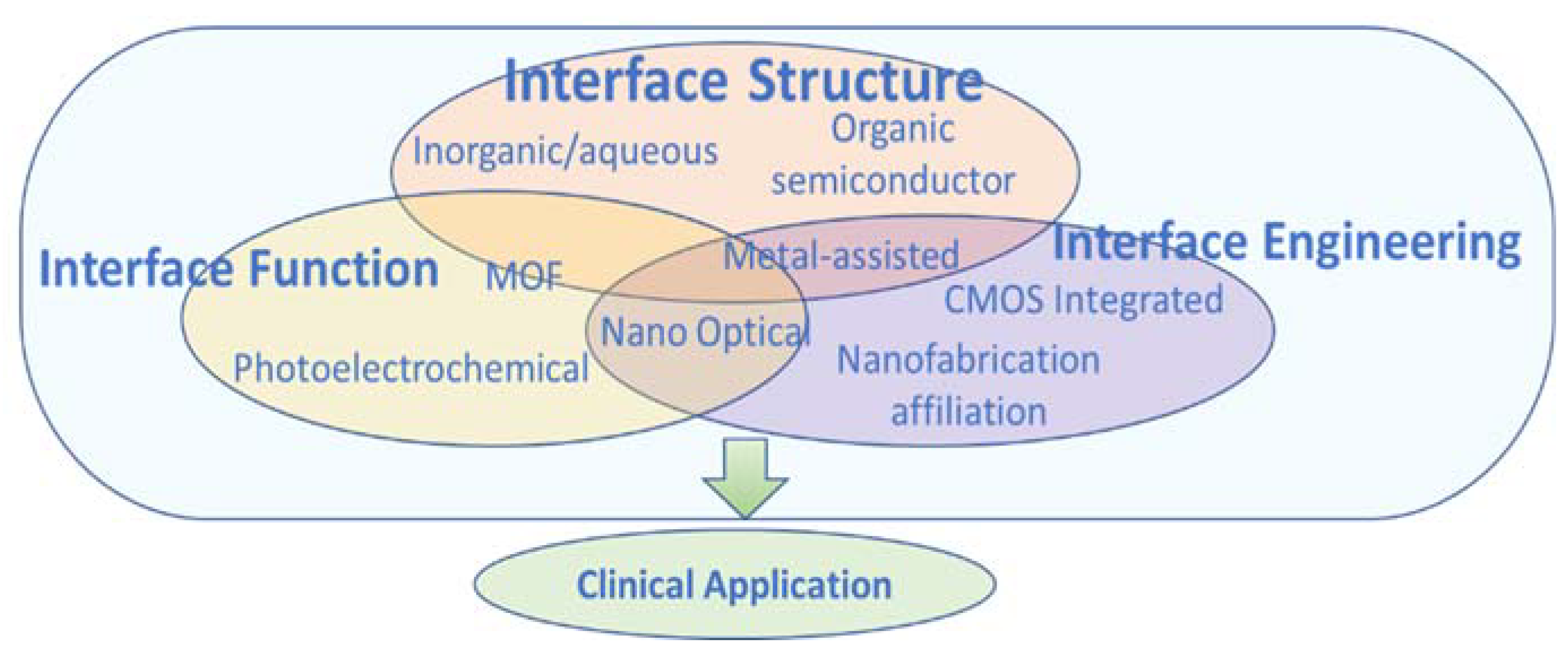
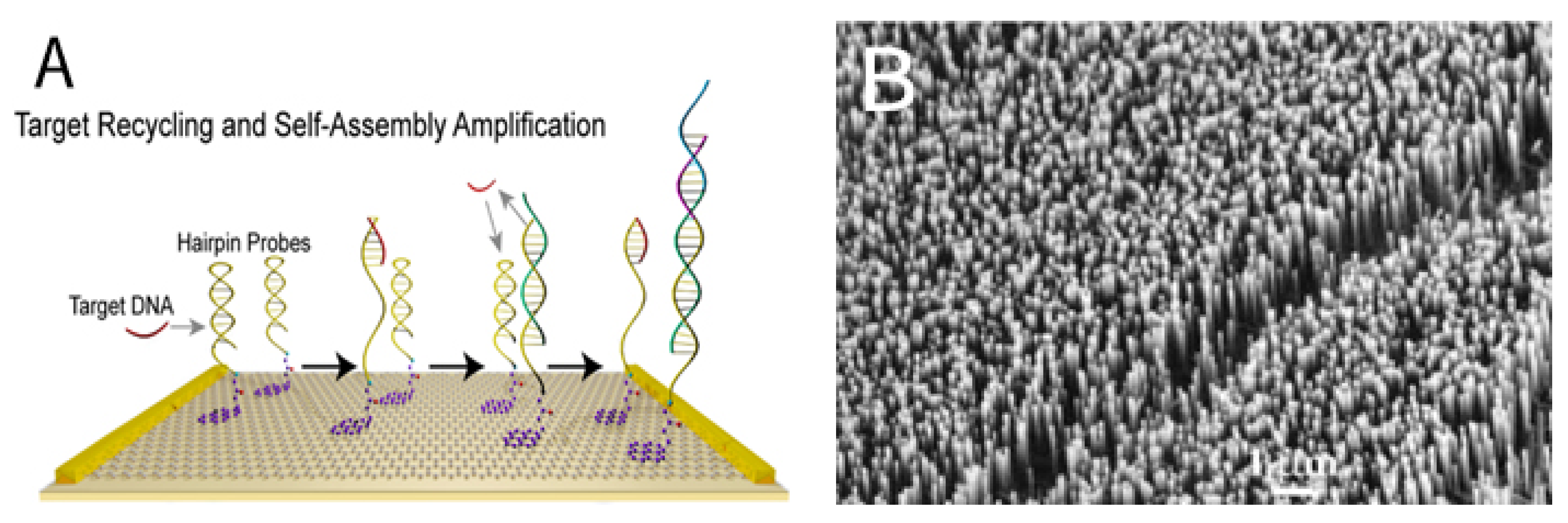
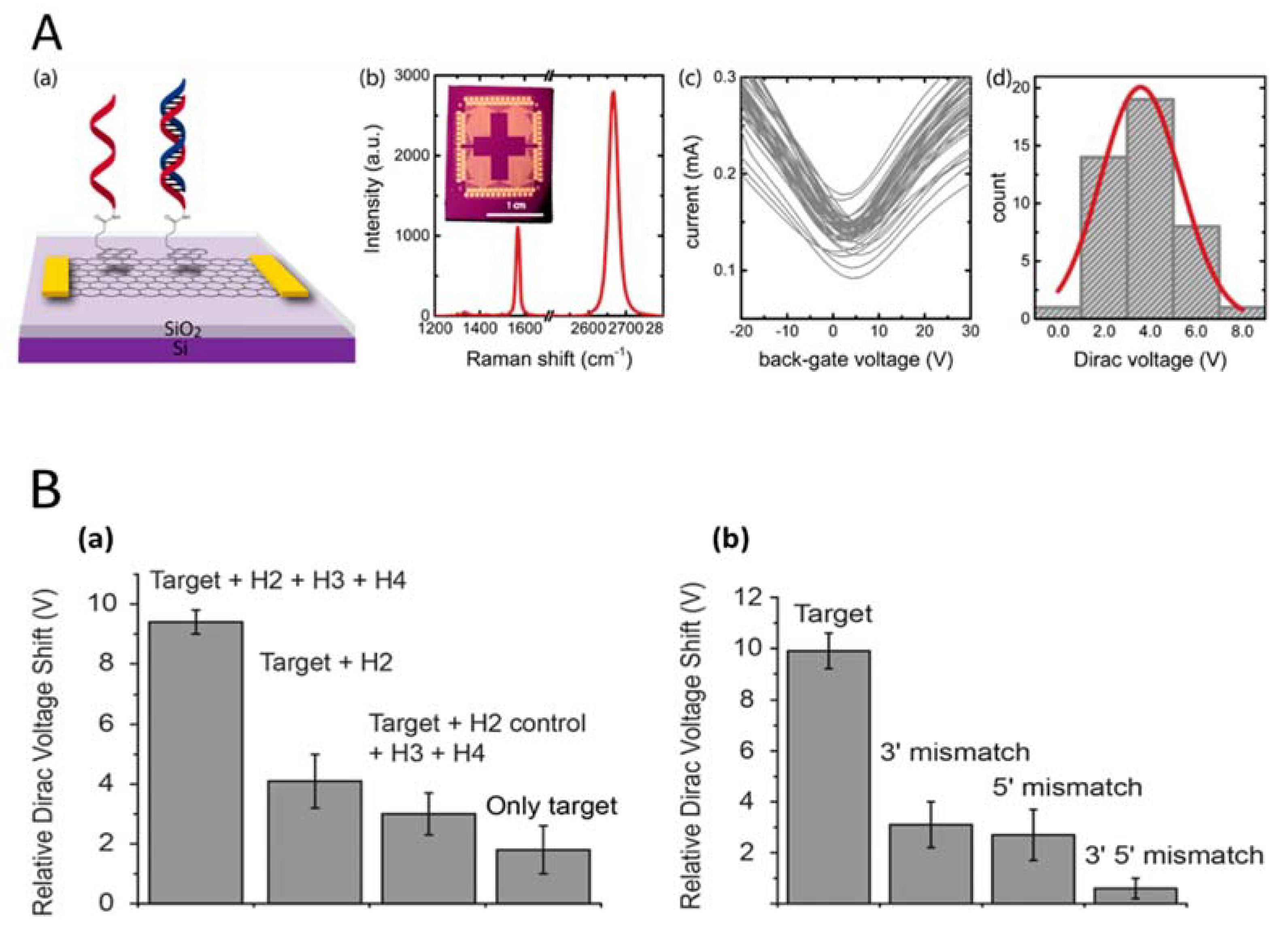
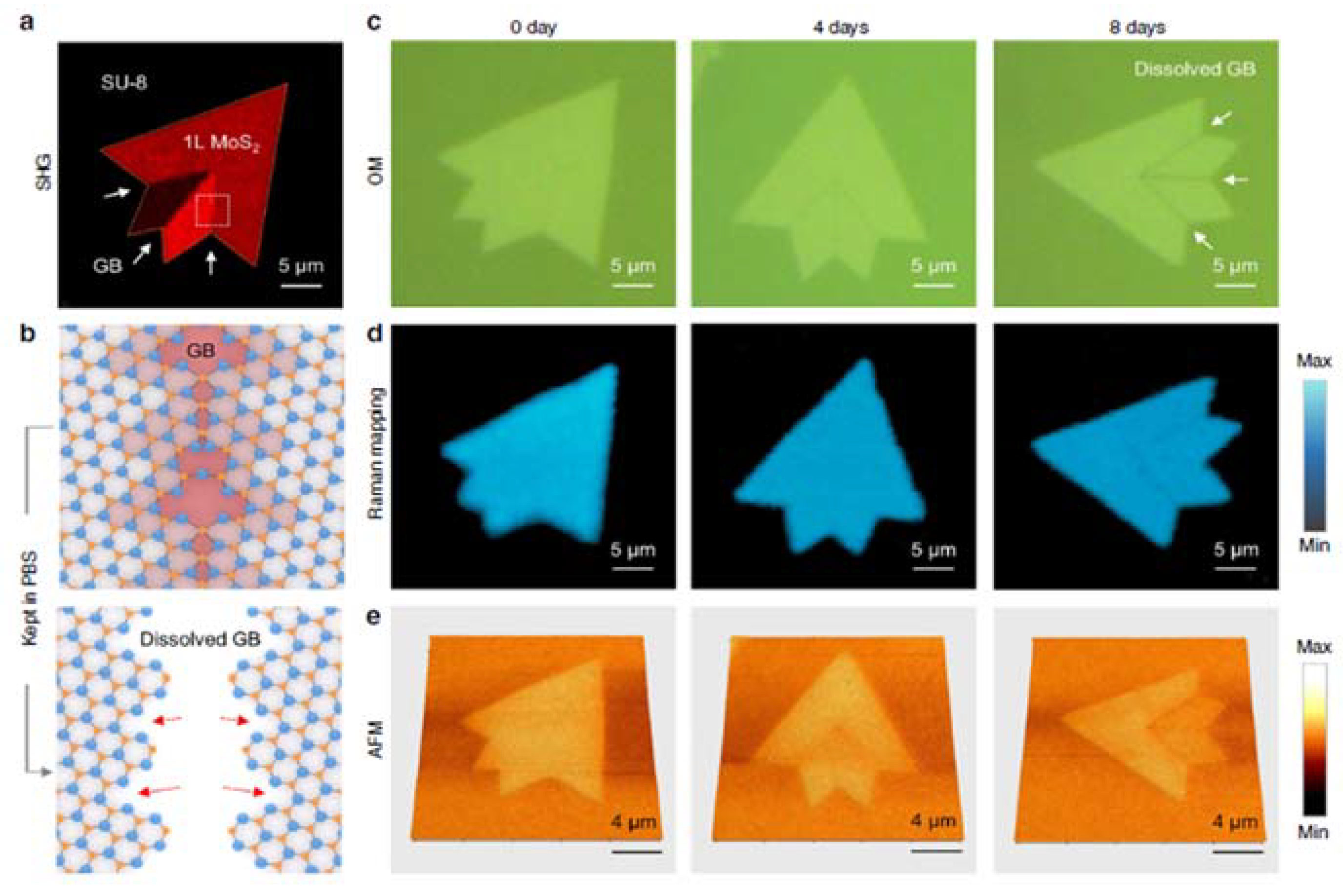
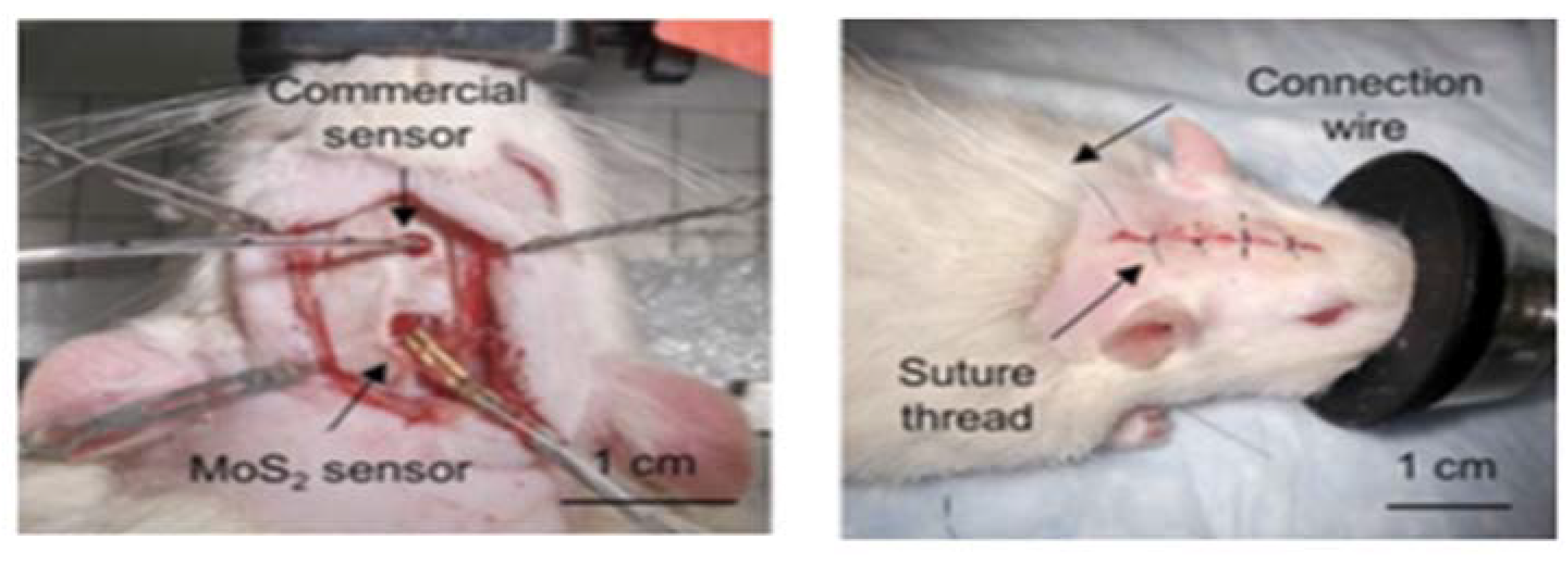
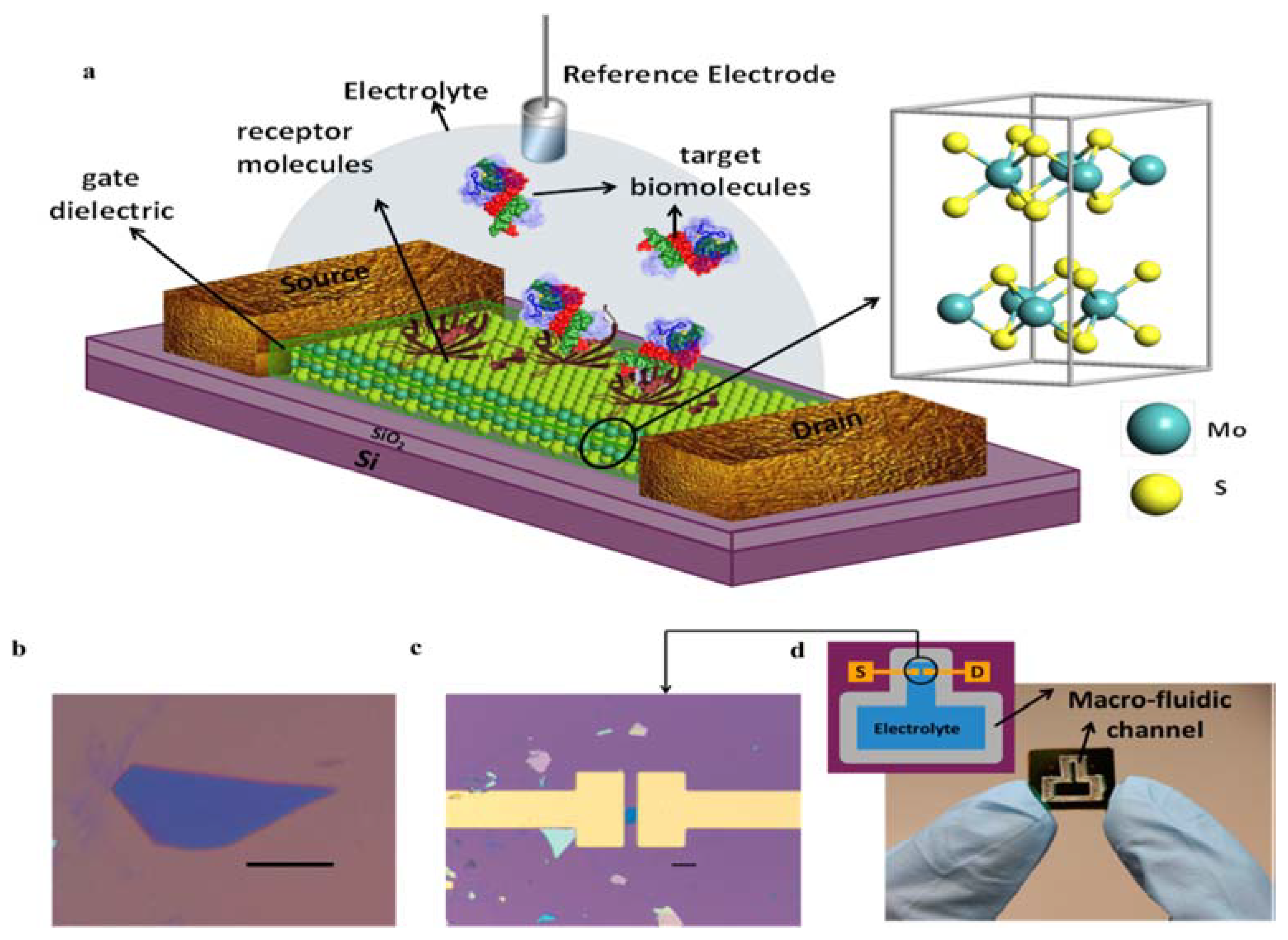
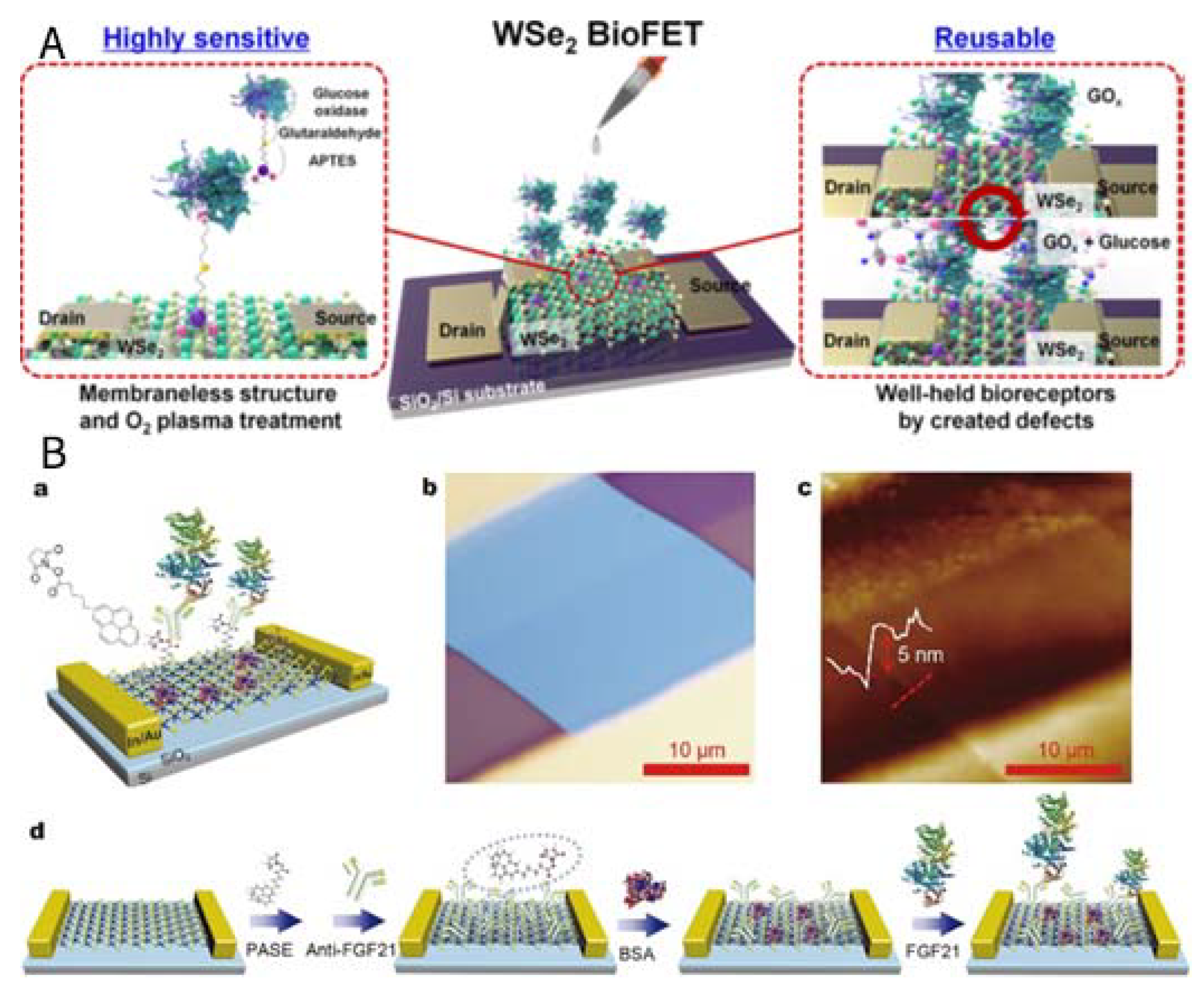
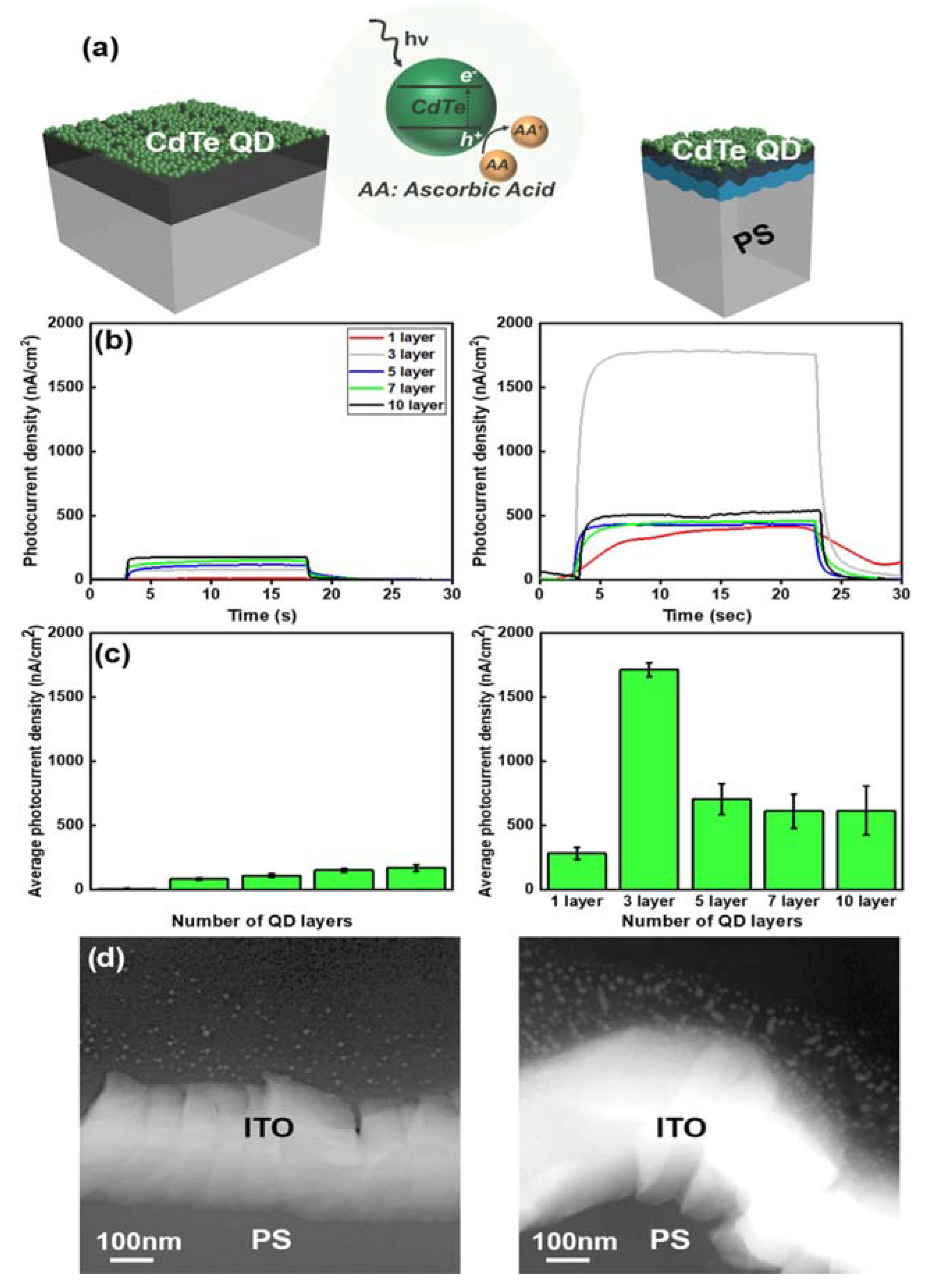
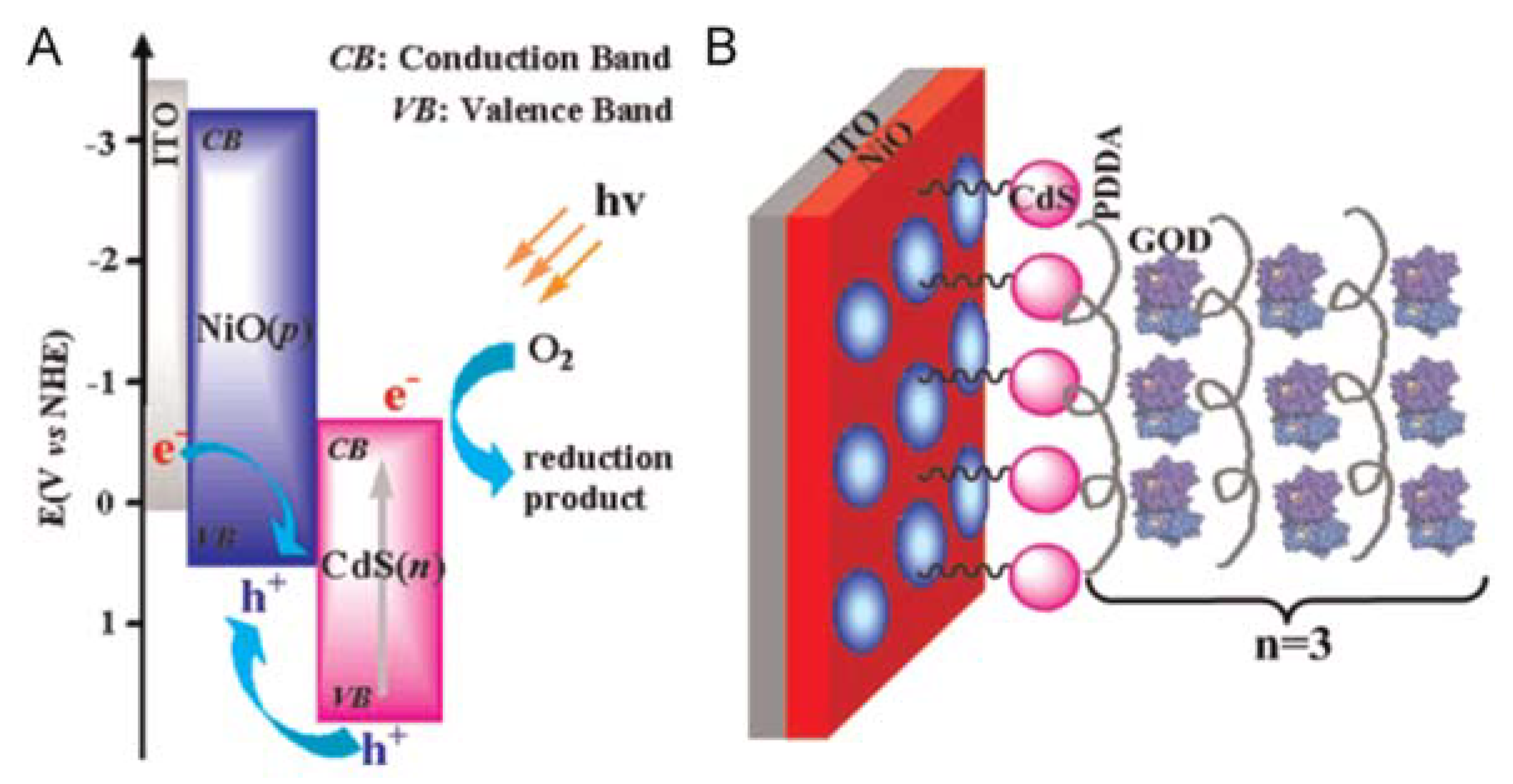
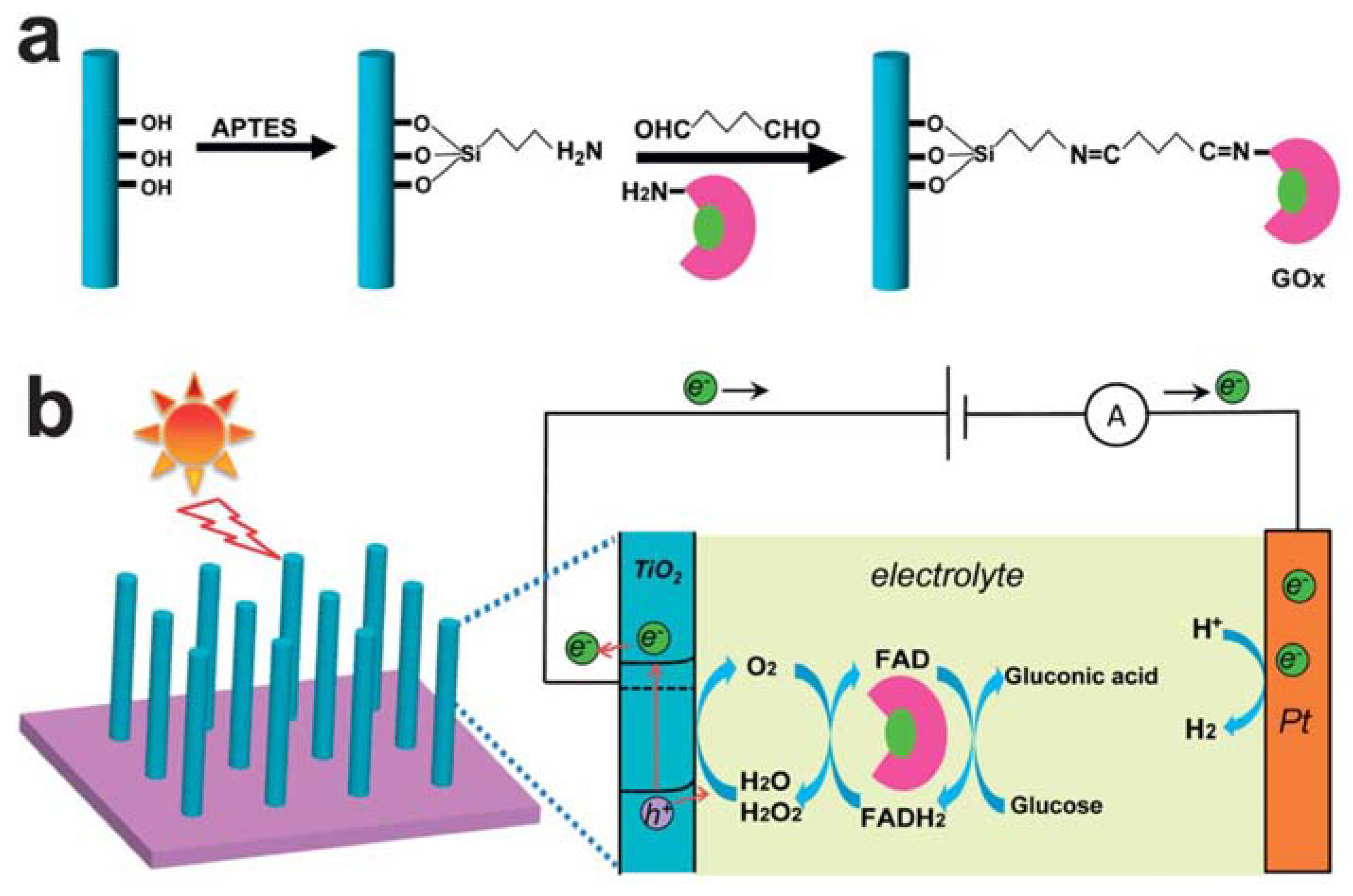
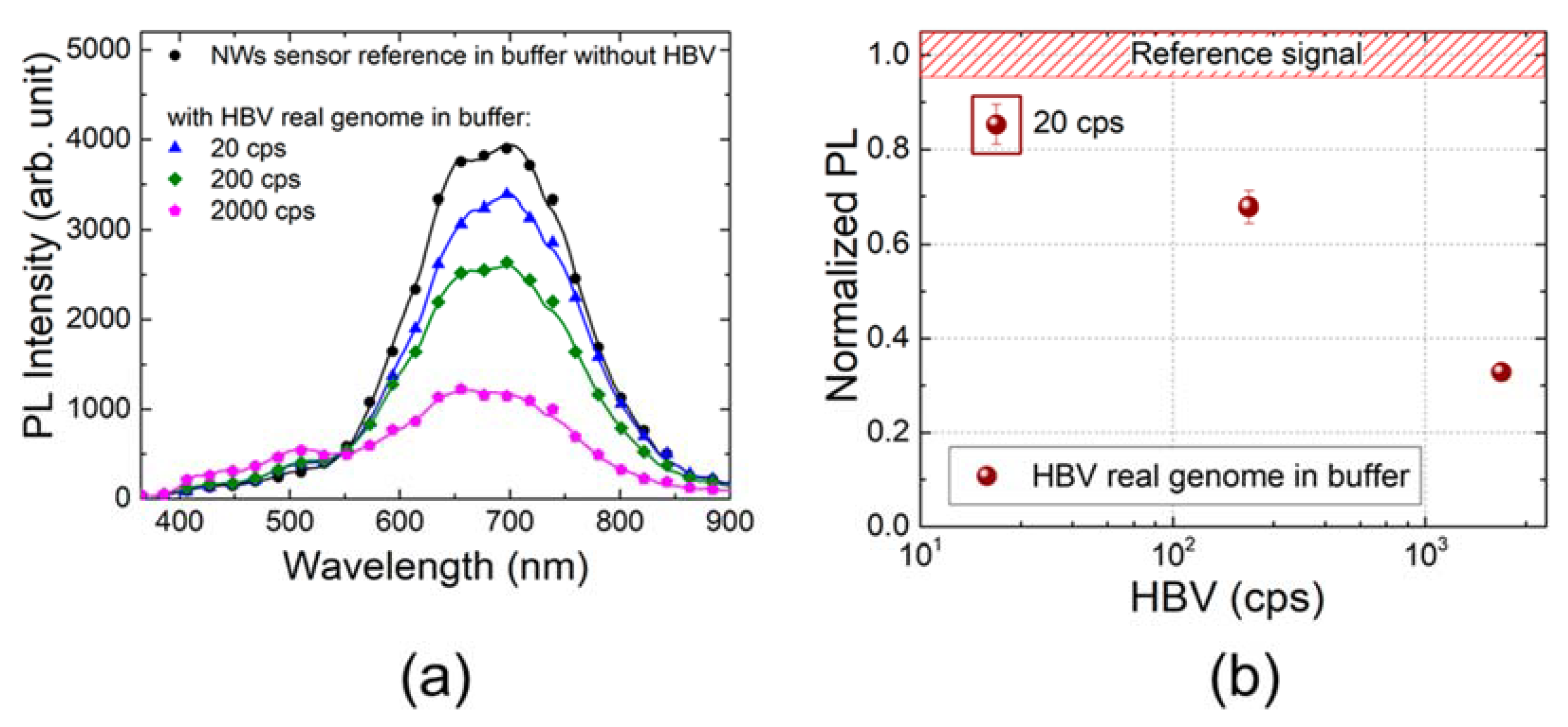
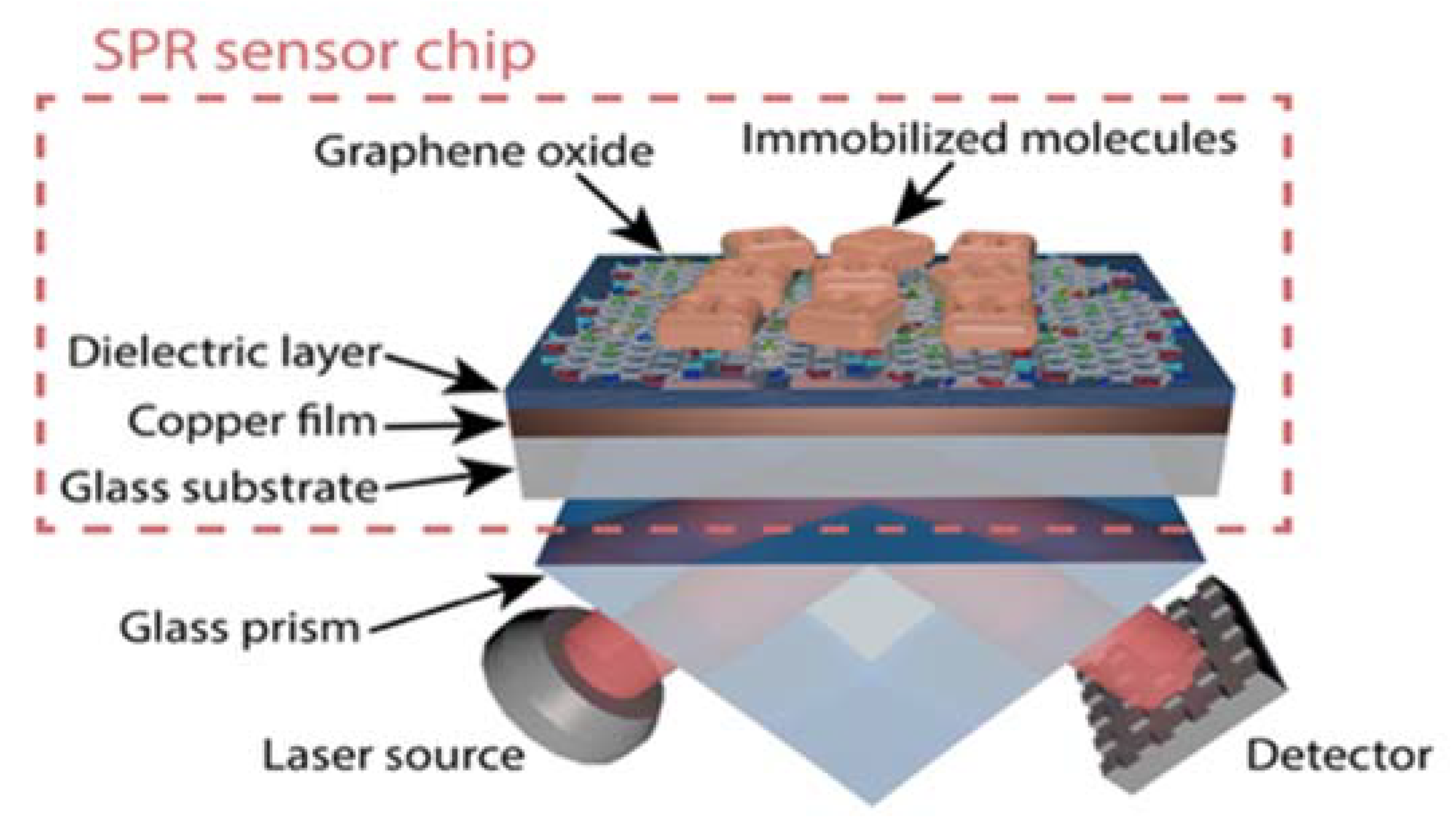
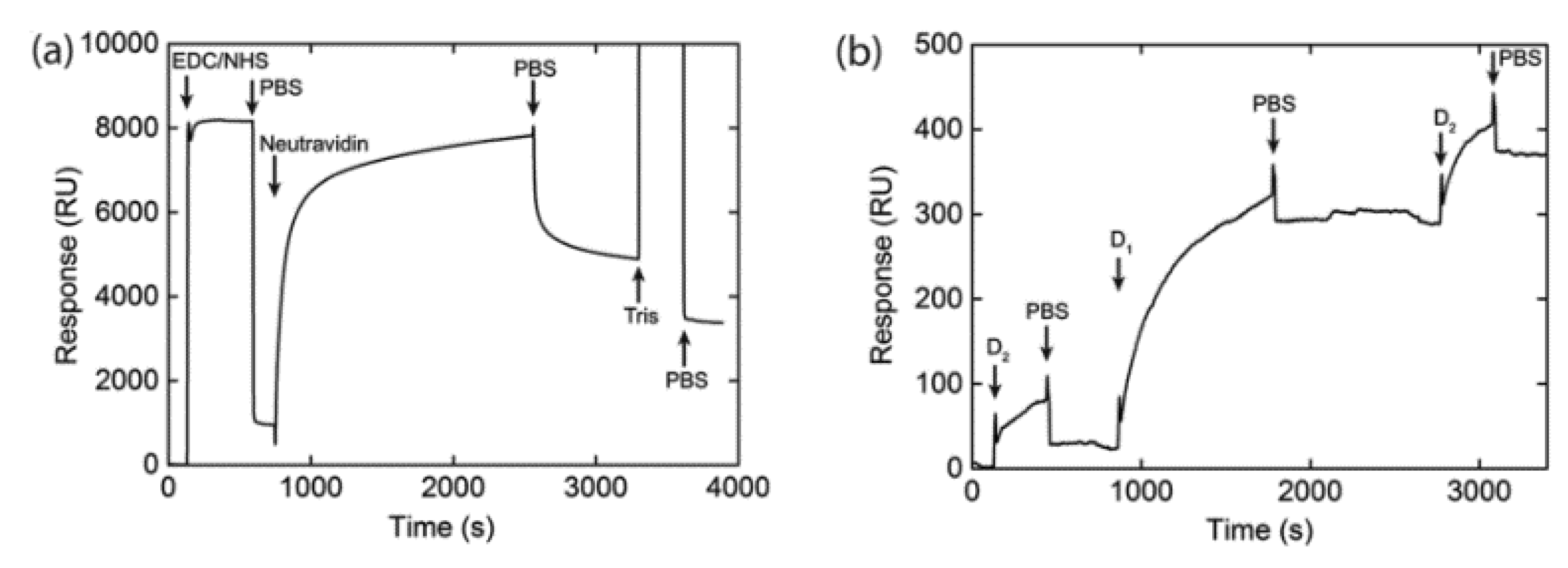
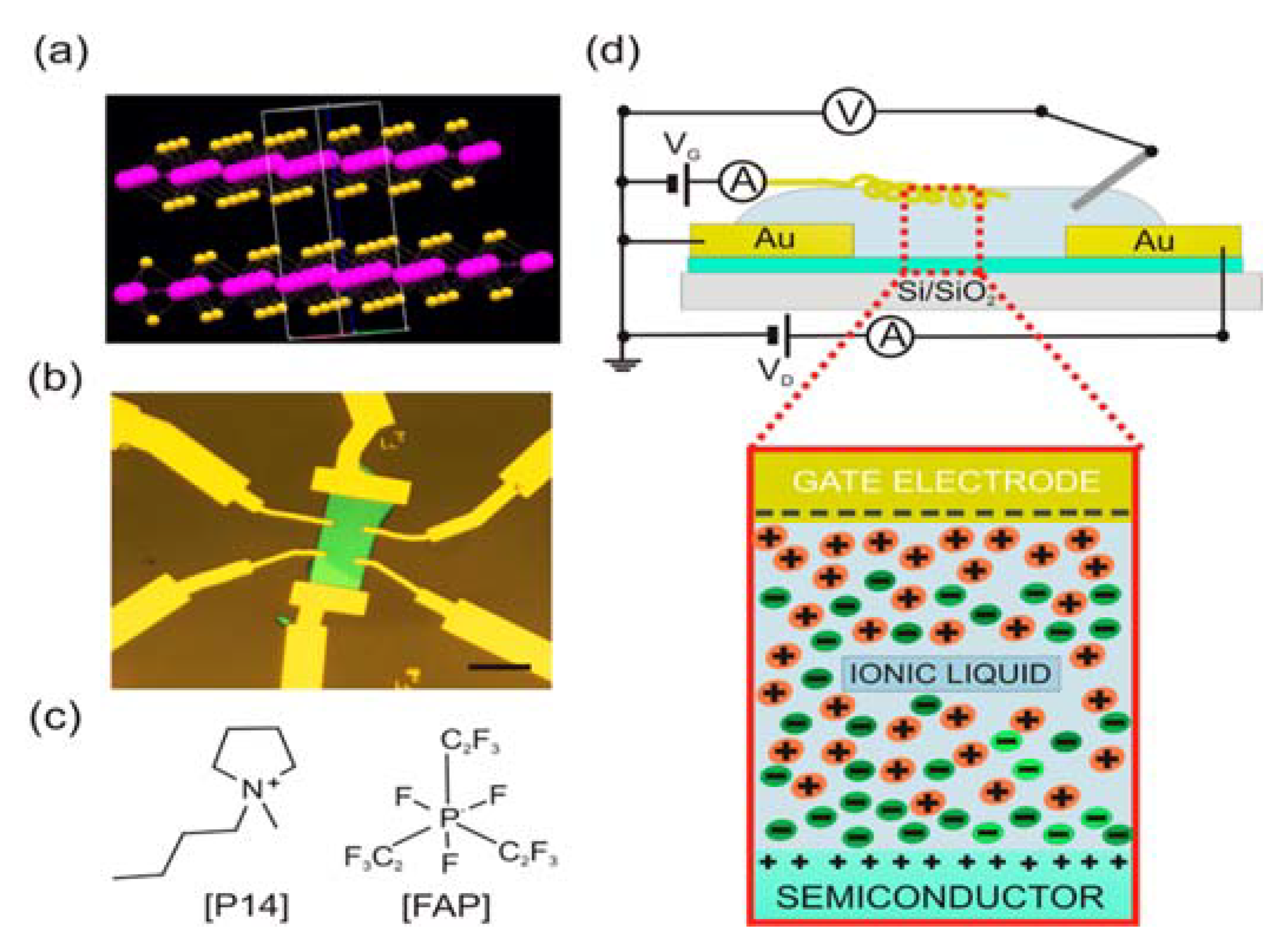
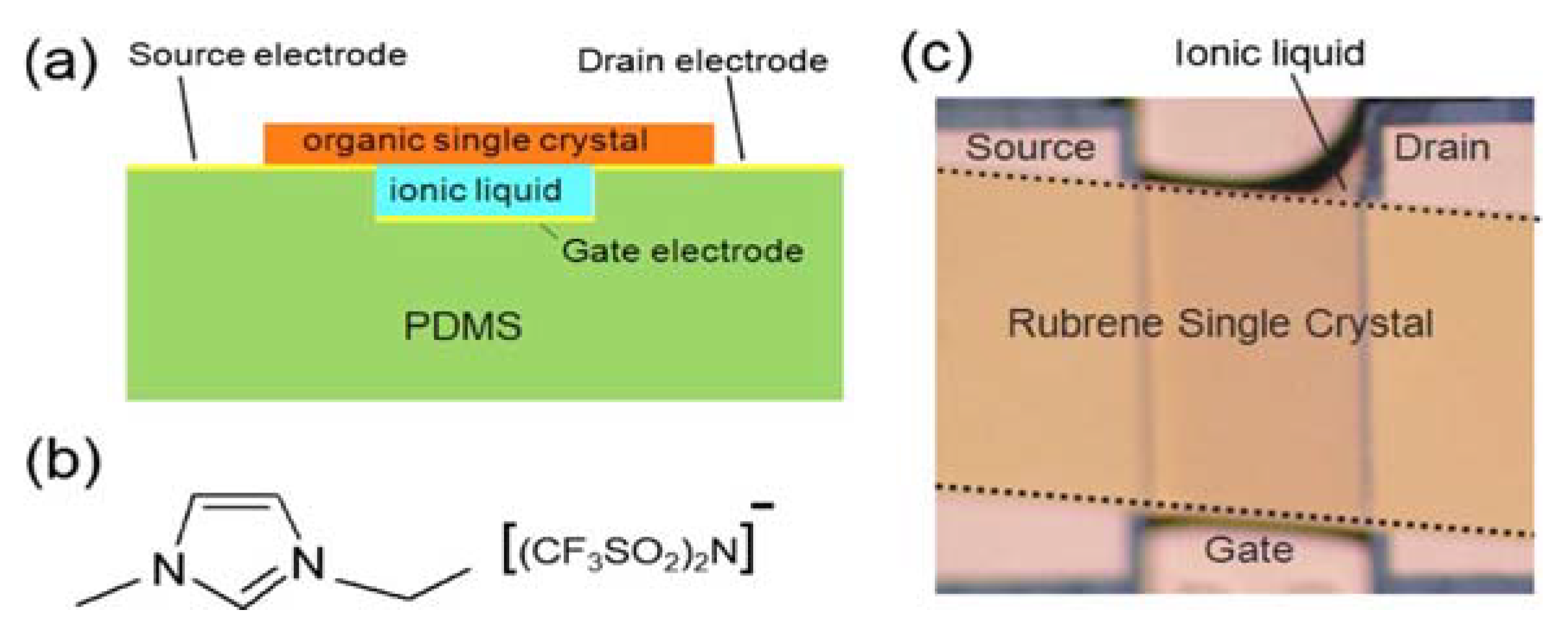
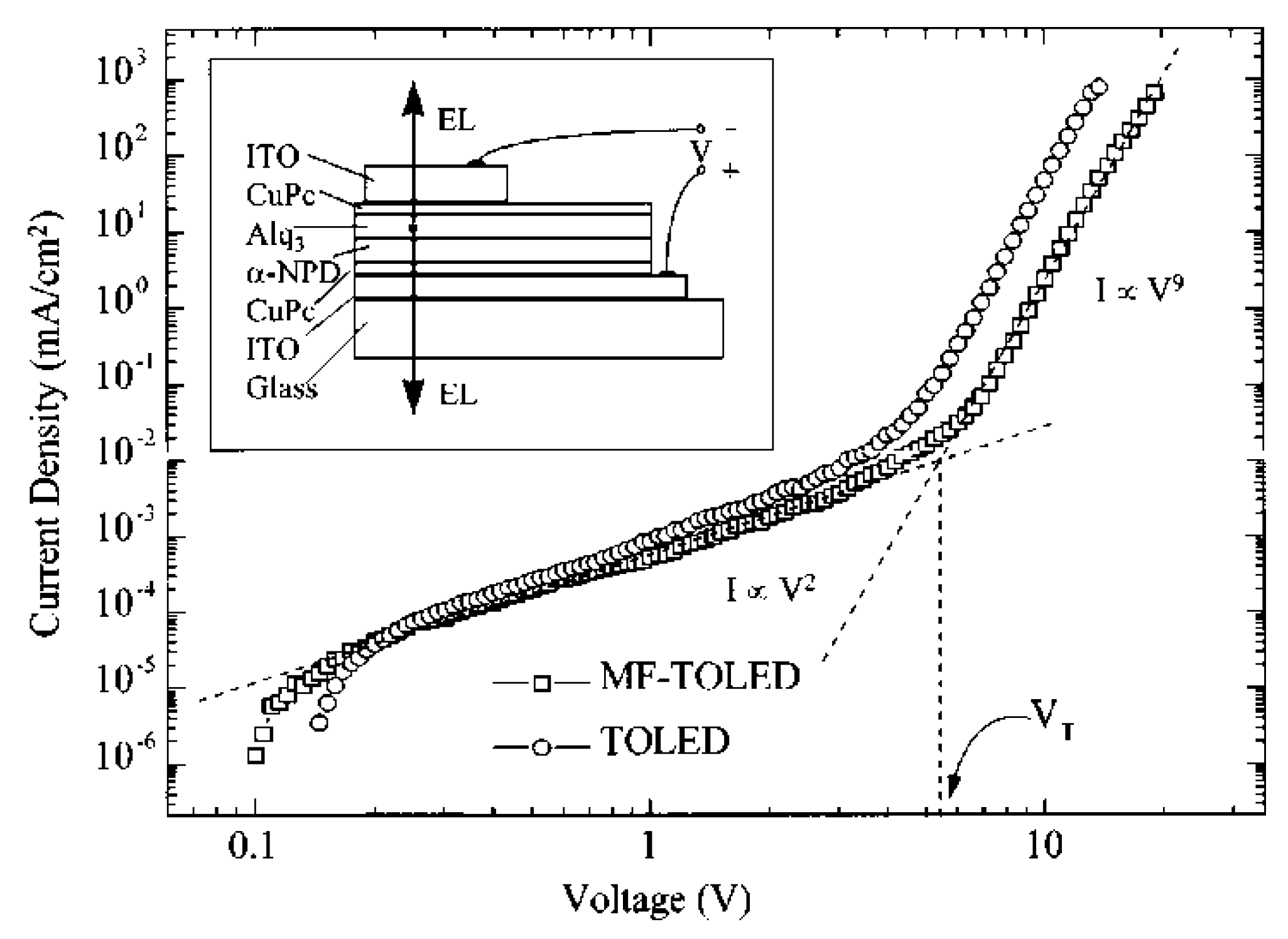
Publisher’s Note: MDPI stays neutral with regard to jurisdictional claims in published maps and institutional affiliations. |
© 2021 by the authors. Licensee MDPI, Basel, Switzerland. This article is an open access article distributed under the terms and conditions of the Creative Commons Attribution (CC BY) license (https://creativecommons.org/licenses/by/4.0/).
Share and Cite
Zhang, M.; Adkins, M.; Wang, Z. Recent Progress on Semiconductor-Interface Facing Clinical Biosensing. Sensors 2021, 21, 3467. https://doi.org/10.3390/s21103467
Zhang M, Adkins M, Wang Z. Recent Progress on Semiconductor-Interface Facing Clinical Biosensing. Sensors. 2021; 21(10):3467. https://doi.org/10.3390/s21103467
Chicago/Turabian StyleZhang, Mingrui, Mitchell Adkins, and Zhe Wang. 2021. "Recent Progress on Semiconductor-Interface Facing Clinical Biosensing" Sensors 21, no. 10: 3467. https://doi.org/10.3390/s21103467
APA StyleZhang, M., Adkins, M., & Wang, Z. (2021). Recent Progress on Semiconductor-Interface Facing Clinical Biosensing. Sensors, 21(10), 3467. https://doi.org/10.3390/s21103467





